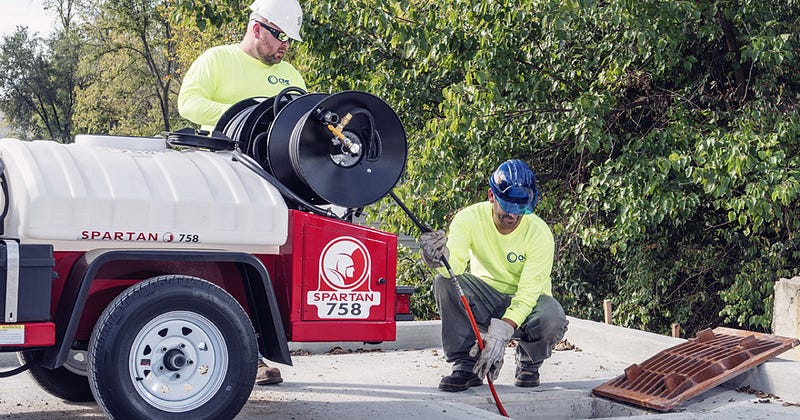Sewer Water Jetting
Finding efficient ways of cleaning pipes and cutting through blockages is one of the main concerns for plumbing professionals. Well known products such as cable machines and snakes get the job done, but are these the most efficient machines out there?
If you’re part of the plumbing industry then you’re probably familiar with waterjetting. In this article we’ll go through the main concepts to understand what these infamous jetters are and how they work.
What They Are
Sewer Water Jetters are machines that eject high pressure water to tear down blockages, vacuum debris or clean the inside of a pipe. Extremely effective when dealing with grease, sand, sludge and even ice blockages. When it comes to roots, jetters are undoubtedly capable of cutting through them, just make sure to have the correct equipment and machine set up required, such as enough PSI power and a specialy designed root-cutting nozzle.
These machines come big and small so you can find high operation trailer jetters or easy to transport smaller but effective cart jetters. This shows their capability to deal with a wide range of plumbing issues and work with different pipe diameters, from unclogging small kitchen sink pipes to clearing 18" mains.

Their versality and efficiency make them a great piece of equipment to add value to any plumbing service. It is more convenient to customers to hire a waterjetting service once a year that will leave a drain system completely clean and as good as new than paying a monthly service to unclogg it.
How They Work
Jetters are composed by a somewhat complex system containing a multitude of parts that make them functional, but for the sake of this article we’ll leave it at two main components: the pump and the nozzle. There are also a wide variety of attachments for sewer jetters such as nozzle types and cameras to see what is inside the pipe.
Pump and PSI
The pump is what sends the powerful stream of water down the machine’s hose. The pressure of the stream is measured in PSI and jetters can get up to 4000+ PSI to clean wide diameter pipes. The PSI and water flow will vary depending on what you intend to achieve. Water flow is the amount of water being ejected every minute. Machines can be set up to eject specific gallons of water per minute.
Drain cleaning and rebris removal require lower PSI pressure but a higher water flow. To get through harder materials like encrustation, mortar or solidified grease, higher pressure and lower water flow are required.
It's important to set up water flow and pressure depending on what it is you’re trying to get done with the jetter. To break through roots, hard pockets of grease and hard-packed dirt, set water pressure at around 3500–4000 PSI with a 6 gallon per minute water flow. Sand, fine blockages and pipe cleaning need 1500 PSI but 40 to 60 gallons per minute.
Nozzles
Nozzles eject the water inside the pipe to either clean it or get through blockages. Different kinds of nozzles can be attached at the end of the hose. The nozzle you'll need will depend on if you want to clean the pipe, unstuck it, remove or vacuum out residue inside the pipe, or break through blockages.
Jet Angles
The way nozzles direct the water impacts on the performance the jetting will have in the pipe. The angles in which the water is ejected can either propel the hose down the pipe to impact the blockages with more power, move the hose slower inside the pipe to concentrate in cleaning the inside of the pipe, focus on vacuuming out residue, etc.
Water streams directed more toward the pipe wall surfaces produce better cleaning results. Water streams directed towards the centerline of the pipe provide maximum pulling power but decreases pipe wall cleaning effectiveness.
- 0°-10° — Powerful thrust to propel nozzle up the line. Most penetrators are designed with this jet angle to shoot up the line with more power and break through blockages.
- 15°-20° — Will clean the pipe wall and also propel the nozzle down the line to move debris. It may be better to focus on each task independently.
- 30°-45° — Cleans pipe walls with minimal thrust and wont move tough debris out the line.



You can see below a Spartan Tool demonstration of how jetters and nozzles clean and remove blockages from within a pipe.
